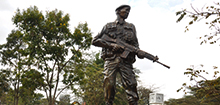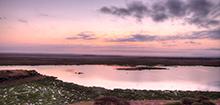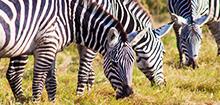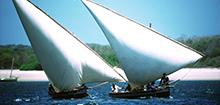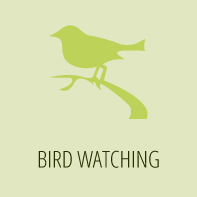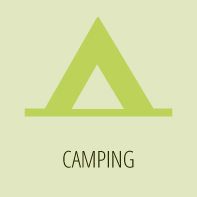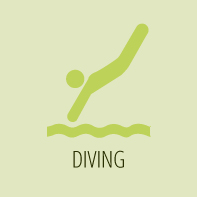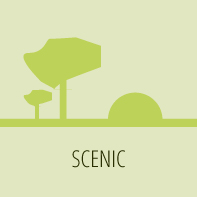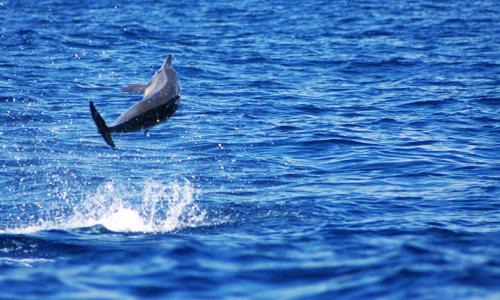
"Home of the Dolphins"
Unspoiled, beautiful and sun kissed, the Kisite Marine Park was established to protect the scenic islands and special habitats of a wide range of endemic marine animals and breeding migratory birds. It lies in the coral gardens south of Wasini Island and encompasses three small coral rag forest islands, each with considerable areas of fringing reef. Kisite is one of the most rewarding snorkelling locations at the coast. Visitors can also enjoy bird watching, diving and of course, sunbathing.
Key features
Marine life
Comprises about 250 recorded fish species, 70 resident dolphins and over 140 catalogued individuals, sea turtles, whales, 56 genera of corals, sea grass and gastropods. Many seabirds in large nesting colonies and internationally significant numbers of roseate terns and crab-plover.
Protected Area Type
Park Size
Climate
Altitude
When to go
What to take with you
- Check local weather and sea conditions before entering the reserve.
- Some marine life is dangerous; do not touch anything under water.
- Do not damage or remove corals. Corals are living organisms which takes many years to form and is host to many rare and endangered species (like the endangered Humphead wrasse)
- Do not remove shells, starfish or any other sea-flora or fauna. Removal is illegal, seriously disrupts the ecosystem and some marine life is dangerous. The areas outside the parks and reserves are threatened by excessive shell collection. Empty shells provide homes for hermit crabs and some fish.
- Do not buy shells and other marine animal products as souvenirs as this encourages further plundering of the reefs and beaches.
- Never dispose of litter on the beach or in the sea. It is illegal and environmentally unfriendly. Marine turtles can confuse clear plastic waste with jelly fish and will die if they eat it.
- Hand-feeding of fish is discouraged. It disrupts normal feeding patterns.
- Hook and line fishing is allowed in the Marine Reserves but prohibited in Marine Parks. Spear guns are not permitted for use in either. Kisite Marine Park just like any other park in Kenya is strictly for non-consumptive use.
- Environmental friendly activities such as snorkeling and diving are encouraged, under the supervision of the Kenya Wildlife Service staff, who work closely with local tour operators and hoteliers to ensure strict adherence to this code of practice.
- Avoid restaurants that serve undersized crabs, fish and lobsters as this contributes to unsustainable fisheries and interfere with species recruitment over different ages and size groups.
- Support traditional coastal livelihoods and do not give money to children on the beach, as this can encourage them to stay away from school.
- Respect the cultural heritage of Kenya, never take pictures of the local people or their habitat without asking their permission, respect the cultural traditions of Kenya and always dress with decorum.
How to get there
- Location: Kwale District, Coast Province. The Marine Park lies 11 kms off the Kenyan Coast (at Shimoni) and 8 kms north of the Tanzanian boarder.
- Distance from Nairobi: 574 kms.
- Distance from Mombasa: 90 kms
* The Park can only be reached by boat. Contact the KWS warden (Kisite Marine National Park, KWS HQ is 200 meters south of the main Shimoni Pier) or your hotel or local travel agent.
Attractions
Park Entry Fee
Kisite Mpunguti Marine Park & Reserve | Citizen | Resident | Non-Resident | |||
Adults KSH | Child KSH | Adult KSH | Child KSH | Adult USD | Child USD | |
215 | 125 | 215 | 125 | 17 | 13 | |
* Mode of payment; Pay for your entry to any of our Parks or Reserves via eCitizen government platform.
* Create a personal account on the eCitizen Government platform by visiting https://kws.ecitizen.go.ke and make park payments in advance for a fast and convenient park entry.
Park Resources
The warden’s office, Information center and KWS self-catering accommodation facilities are located 200m south of Shimoni Pier.
Contact Person: Warden
Postal Address: P.O. Box 55-80400, Ukunda,.
Landline: 020-3549520
Mobile: 0723929766
Email: kisitenp@kws.go.ke
Boat Safaris Contacts:
- Kisite Boat Owner’s association: Chairman Bumu Shebwana mobile +254723219568, email: kisitecommunityboatoperator@gmail.com
- Wasini Boat Owner’s association: Chairman Abedi Omari Mohamed mobile 0728347101
- Charlie Claw’s company: Tel: +254 (40) 3202331, 3203055 .Email: sands@wasini-island.com
- Dolphin Dhow Tours: Tel: +254 (40) 3202144. Email: bookings@dolphindhow.com
- Pillipipa Safaris: Tel: +254 (40) 3205185 or 52286 Email: info@pillipipa.com or pillpipa@ikenya.com

